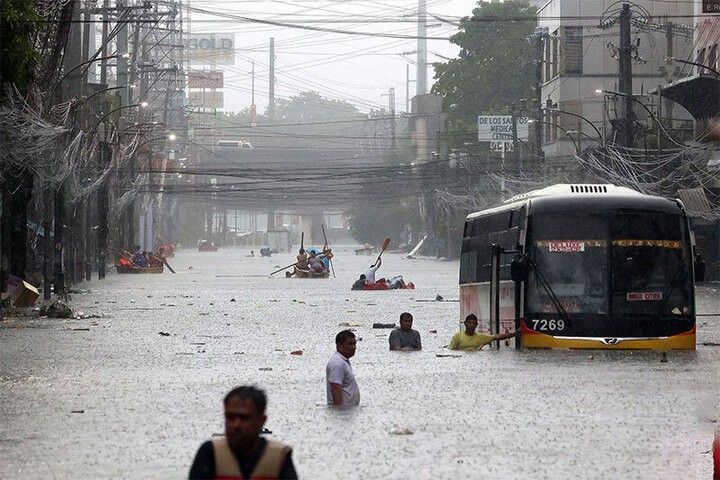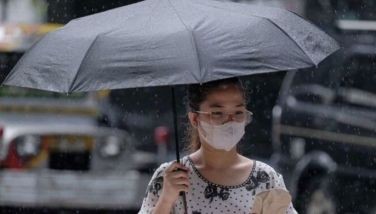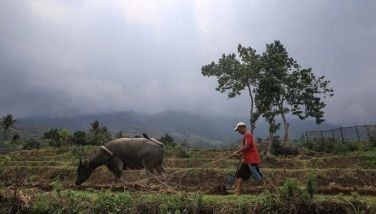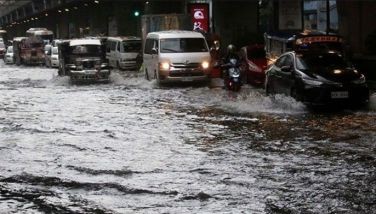Senate probe set on root cause of floods

MANILA, Philippines — Officials of the Department of Public Works and Highways (DPWH), Metropolitan Manila Development Authority (MMDA) and other government agencies in charge of the country’s sewerage system will be grilled about the recent massive flooding in the metro, Sen. Grace Poe said yesterday.
Poe, who chairs the Senate committee on finance, said even officials of the Department of Environment and Natural Resources (DENR) would also be questioned about reclamation activities.
Poe said the DENR will be asked about the reclamation. “What did the studies say? Because there are conflicting reports. The (Senate) sergeant-at-arms said it correctly when he said that kind of flooding had never happened in the Senate before.”
Aside from the scheduled hearing of the Senate committee on public works, Poe vowed to scrutinize the government budget and spending for projects meant to address flooding.
Poe pointed out that the “massive floodings could have been avoided had operations run smoothly, with no corruption and no neglect. Maybe even if there is flooding, it would not be that bad.”
The senator asked who does the studies for reclamation projects with national impact.
“When the local government approves and is given permission by the DENR, who really studies that?” Poe said, adding that when the government suspends the projects due to perceived harm to the environment, the investment will be affected.
“Those who approved must answer for why they allowed it. I don’t know what really happened. I have heard that others have continued the reclamation, but there are still some that are not allowed,” Poe said.
Poe also said the recent incident of massive flooding would need a whole-of-government approach to arrive at solutions.
“But there must be one leader when it comes to water. But there is no single department for that. We have seen in climate change that DPWH or DENR is not capable of water management. The process is very messy. There is MWSS, there is DENR, there is DPWH, so when there is a problem, they have to teach and teach. Now if there is a department, they will be responsible because, first of all, they will make the policy, what should be done,” she said.
The flooding brought by climate change threatens at least 4.8 million individuals and may result in at least P274 billion in annual damage in the near term, and 5.2 million individuals and P300 billion in the long term, according to the report contained in the 2024 National Action Plan (NAP).
Based on the 268-page NAP that was approved by Marcos, pluvial floods may result in the disruption of approximately 4.8 million individuals in the near term or from 2020 to 2040 annual average and 5.2 million individuals in the long term from 2040 to 2060 annual average.
The report added that pluvial flooding is forecast to cause up to P274 billion in infrastructure damage in the near term and nearly P300 billion in the long term.
Pluvial flooding is defined as inundation of land and urban areas caused by heavy precipitation, where the excess water cannot be efficiently absorbed or drained due to factors such as impermeable surfaces and inadequate drainage systems.
Meanwhile, the report said that at least 250,000 Filipinos are exposed to fluvial flooding in the near term, with economic losses of P13 billion and threatens 300,000 individuals and possible damage of P16 billion in the near term.
Fluvial flooding occurs when rivers and streams exceed their capacity and overflow their banks due to intense or prolonged precipitation.
The report added that at least two million Filipinos may face exposure to at least one significant rain-induced landslide event per decade.
“CAR, Region 4-B (Mimaropa), and Region 2 (Cagayan Valley) in Luzon are projected to experience the highest average and maximum flooding depths by 2030. Regions 4-A (Calabarzon) and 3 (Central Luzon) in Luzon, are projected to experience the highest number of people impacted by pluvial flooding by 2030 with up to 880,000 and 520,000 individuals, respectively,” the NAP report said. – Rainier Allan Ronda, Bella Cariaso
- Latest
- Trending
































